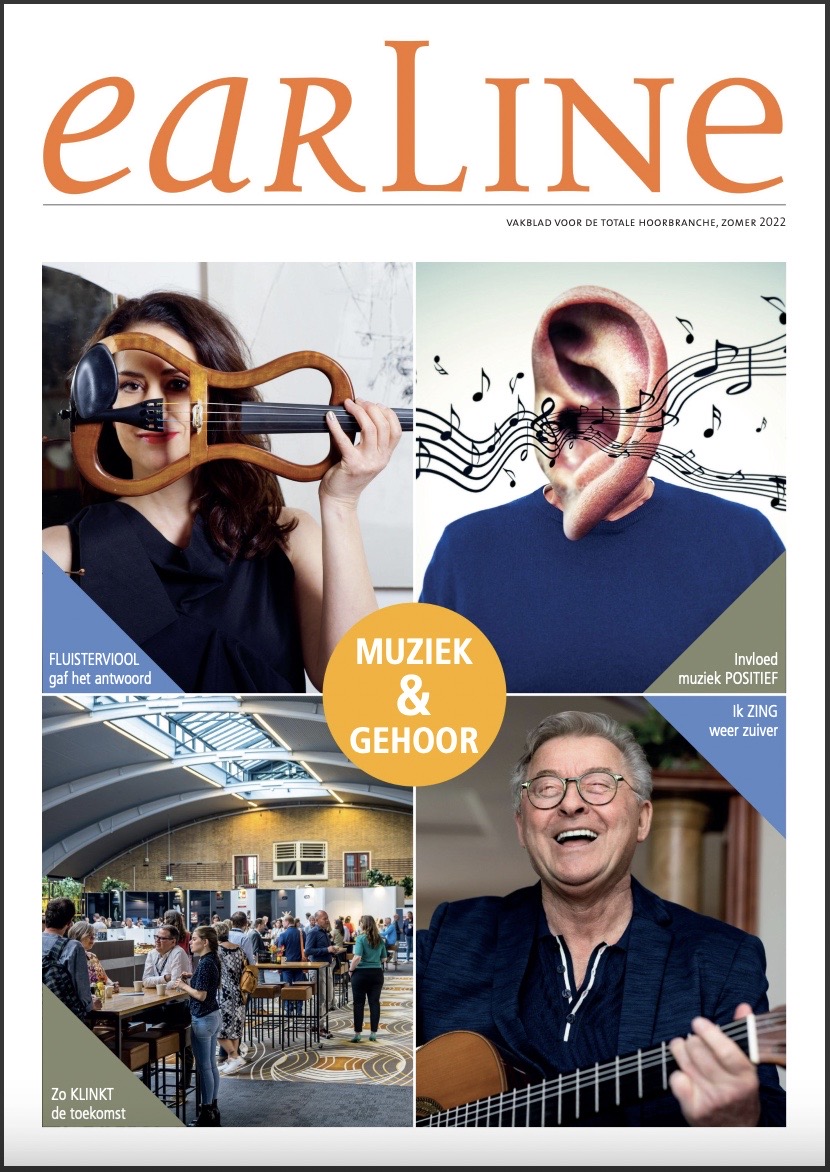
EARLINE magazine
The latest edition of Earline Magazine addresses the prevalence of hearing issues among professional musicians, often due to frequent exposure to excessively loud conditions. Earline hosted a panel discussion with Director of the NVAB Carmen De Jonge, rapper and composer Rosario Mussendijk (sor), oboist Marc Stotijn, clinical physicist & audiologist Jan de Laat, and bassoonist Jos de Lange. Violinist Monica Germino reacts to the discussion.
Taboo
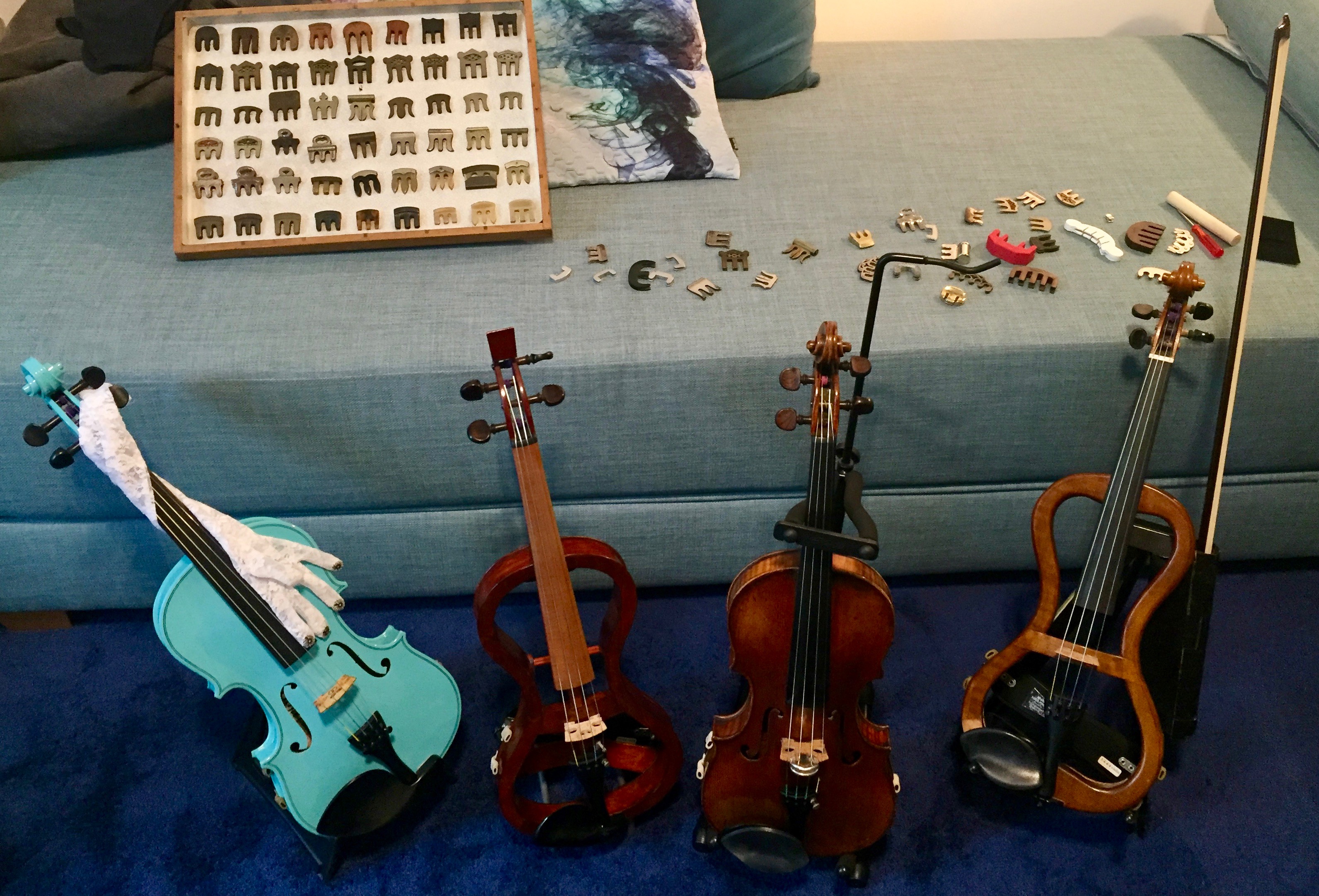
my companions these days...
from left to right: mr. blue (with tapping glove), a ca. 1970 frame violin, a J. B. Ceruti violin (1802), a ca. 1870 frame violin
lurking in the background: framed vintage mutes. Special thanks to Stam Vioolbouw of Utrecht
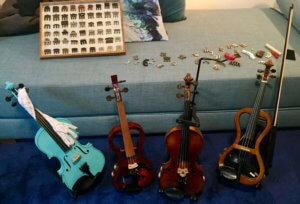
& the ingenious whisperviolin, with adjustable decibel levels
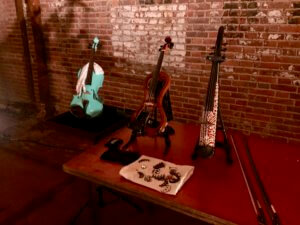


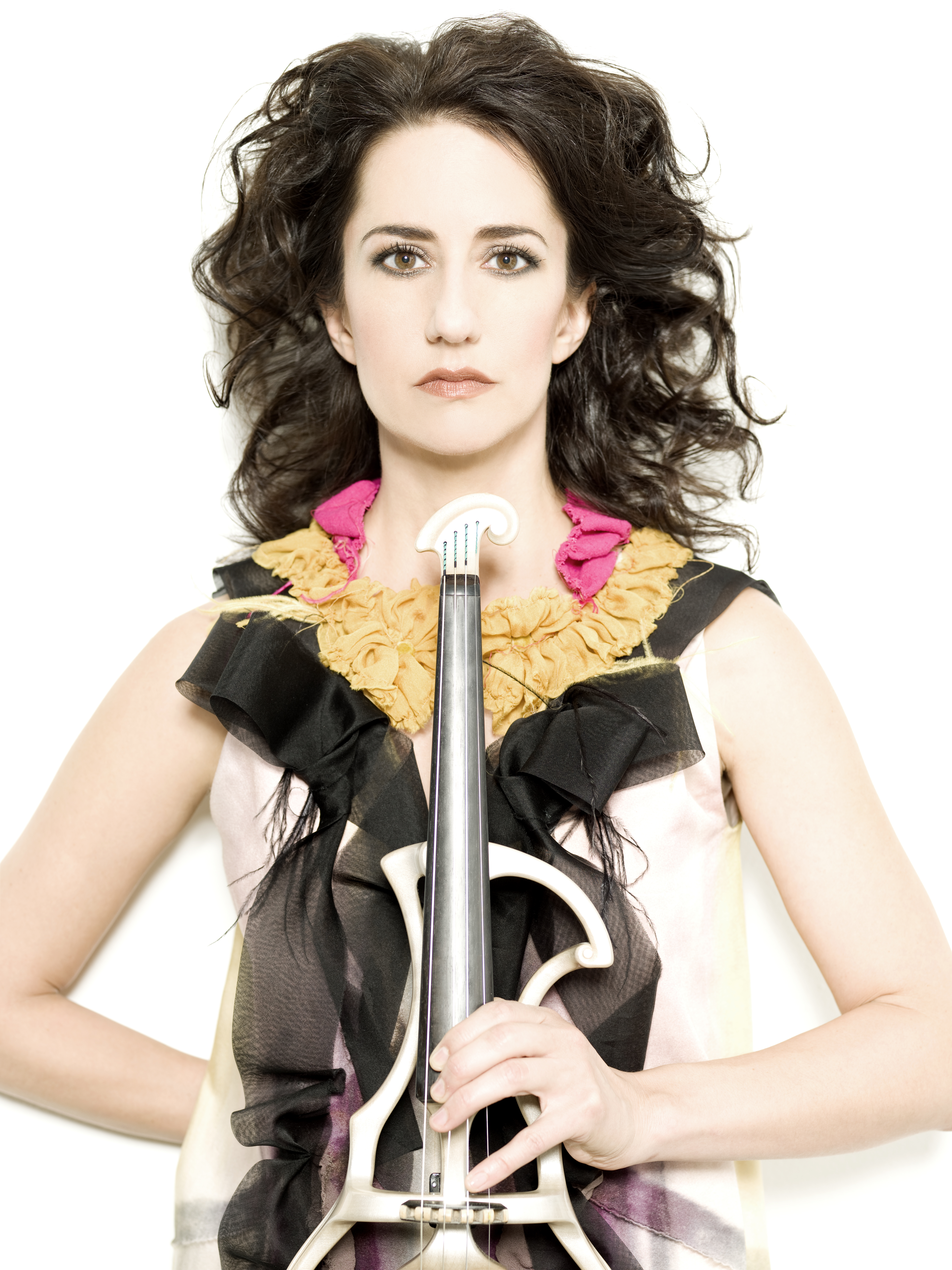
De Volkskrant: "Violinist Monica Germino can..."

She has known for a long time that she is 'sensitive to sound,' which means that sound enters her ears at a higher level than it would to others hearing the exact same sound. That is why her ears are more prone to damage. The loudest violinist in the country can now only play very softly.
'It's like a runner who hears that if he keeps running at high speeds, he is likely to have knee injuries in the future. He can still do a fast walk,' says Germino. '80 decibels is my fast walk.'
Quite a blow for someone who cherishes volume. Even her acoustic violin is too loud. Germino's first reaction is to stop everything. 'I didn't want to have the violin next to my ears.' She arranges replacements for her projects and concerts. She can hardly talk about her condition with others. 'Playing the violin is my identity. What was I supposed to say now? Hi, I'm Monica and I'm ...'
She also calls Michael Gordon, the world-famous American composer, to cancel a project. 'Then everything changed. For Michael, stopping was not an option. He said, "I am going to write you a very soft piece. And I want to be the first to do this for you."
Two colleagues from the New York collective Bang on a Can, Julia Wolfe and David Lang, join forces. They have been working with the theme of silence for some time; for example, Lang wrote a 'whisper opera.' Wolfe had written a piece for Germino before. The Dutch composer Louis Andriessen, who composed several pieces for Germino, is asked to be artistic leader. The result, MUTED, will premiere tomorrow at the Oranjewoud Festival. Germino can play again. 'The composers saved me,' says the violinist.
Two historical 'frame violins' are featured in MUTED. A frame violin is a violin without a sound box. Just like an electric violin, but acoustic and unamplified. A violin without a sound box is extremely quiet. Such an instrument is usually used to practice (to spare the neighbors). The renowned industrial designer Marcel Wanders, former amateur violinist, has also built a spectacular whisperviolin with luthier Bas Maas. Instead of the traditional scroll found on normal violins, the whisperviolin has a finger, as if to say: shhh.
But the music in MUTED is not necessarily extremely soft. 'It is also about the perception of sound, and about contrast. For example, I can start out playing with a sourdine, a mute, on the violin. When I take it off the audience suddenly experiences the music as loud, but it is really not loud at all. Sound works just like light, you adapt to it.'
Can't you just play with earplugs, other musicians sometimes ask. Germino has tried it for a year before she finally quit her orchestral job at the end of the '90s, already diagnosed with sound sensitivity. 'I never got used to it. Earplugs are deadening. They take away too many of the subtle details, such as the sound of bow hair gliding across a string. '
Many colleagues did not understand why she quit her job. Hearing damage is a sensitive issue for (classical) musicians, almost a taboo. Those who play in a Wagner opera in an orchestra pit are exposed to sound levels around 130 decibels. Germino: 'When I left the orchestra, a colleague said: "Well, aren't we all deaf?'
However Germino is not deaf, perhaps to the contrary. By playing softer, her experience of music has changed. 'I am now much more aware of sound. It sounds ironic, but I now hear a hundred times as much as before.'
Muted. 7 (try-out), 8 (premiere) and 9/6 2018, Oranjewoud Festival. Next season (international) tour.
WHISPERVIOLIN, FRAME VIOLIN, SOURDINE
The whisperviolin, made for Monica Germino by designer Marcel Wanders together with luthier Bas Maas, is a violin that produces fewer decibels than the normal, acoustic violin. It is inspired by the seventeenth-century 'pocket violin:' a violin with a narrower sound box, then used by dance masters.
She also plays two frame violins: violins without a sound box, only the 'ribs.' These instruments were made out of the leftover wood from making violins. The sound is softer and rich in overtones, which are higher tones that vibrate sympathetically with the sounding tone.
An ordinary violin can also be made to sound softer when using a sourdine, also known as a mute. This is a clip made of wood, plastic, metal or leather, which is placed on the bridge, limiting or altering the vibrations. Germino now has a collection of hundreds of sourdines.
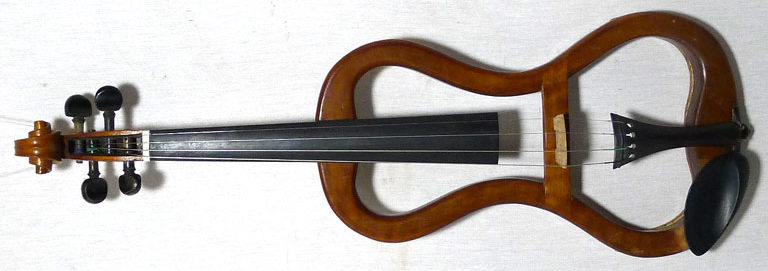
frame violin
Welcome to the newest addition to the family, which thus far includes a Ceruti from 1802, a Violectra by Dave Bruce Johnson, a modified violin for INDUSTRY, Mr. Blue (seeing is believing), and more coming up...watch this space!
This frame violin, also known as a mute violin, is from ca. 1870. It has a beautiful, intimate, overtone-rich sound. Surprisingly little is known about these striking instruments. One resource is the National Music Museum at the University of South Dakota.
